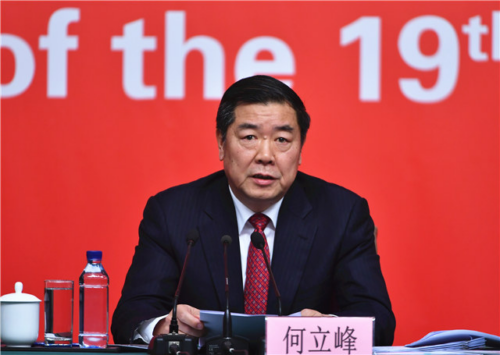Negotiating with the party-state: Q&A with veteran banker Weijian Shan
Weijian Shan is a longtime China investor based in Hong Kong. We discussed his recent book about taking control and turning around a Chinese bank.

Veteran dealmaker Weijian Shan (单伟建 Shàn Wěijiàn), now at PAG, has just published his third book, Money Machine: A Trailblazing American Venture in China. The book is an account of the only instance of a foreign entity taking a control stake in a Chinese bank that provides an inside view of negotiating with China’s party-state apparatus.
Shan’s tale also betrays some nostalgia for a time when China’s banking system and economy were opening up to the rest of the world: The book covers the period 2002-2012, charting the time from Shenzhen Development Bank’s initial approach to Shan’s private equity firm, Newbridge Capital, to the bank’s eventual merger with Ping An Bank in 2012. In those years, Shan and his team had turned the bank from one of China’s worst performing financial institutions to one of its most respected. Shan also made his firm a fourteen-fold return on their initial investment.
I spoke to Shan about the book, what has changed in the last two decades, and his take on the future. His two previous books are Out of the Gobi, an at times visceral memoir of his time in the Gobi desert during the Cultural Revolution, and Money Games, about his experience taking over a Korean bank during the Asian Financial Crisis, which is where our conversation began.
China news, weekly.
Sign up for The China Project’s weekly newsletter, our free roundup of the most important China stories.
Let’s set the scene. Money Machine: A Trailblazing American Venture in China, is the third book that you have written and the second about the acquisition of a failing bank. Your previous book Money Games was about taking control of one of South Korea’s largest banks. What do you see as the main similarities and differences between the two?
The similarities are obvious: Both are about acquiring control of banks. But the differences are also quite obvious: Money Games is a story set against the background of the 1997 Asian Financial crisis in Korea, whereas Money Machine is the story of acquiring control of a national bank in China. When it comes to banking, the participants, the environment, the countries, the cultures, the settings are all very, very different.
Let me point out one notable difference: Korea’s stock market in 1997 lost about 85% of its value in U.S. dollar terms, and by the end of the year Korea, the 10th largest economy in the world, had only $8.9 billion left in foreign exchange reserves, enough to last it for about two or three days at the rate of capital flight. To put that into perspective, my firm today, PAG, manages about $50 billion in capital. Back then, the IMF and the World Bank came in to provide a rescue package to the government of Korea on the condition that they had to sell at least one of the failed commercial banks to foreign investors. They saw the cause of the banking crisis as due to the lack of a so-called “credit culture,” that is, lending on the basis of the creditworthiness of the borrowers as opposed to on the basis of personal relationships, or industrial policy. Korea was very reluctant to bring in foreign capital to take over control of Korea’s largest banks, but foreign capital from investors became a necessary evil.
On the other hand, going to China in 2002, around the time that we started to look at acquiring control of a national bank, China’s banking system was also very weak. And in the next few years, China would fundamentally restructure the whole system by cleaning up all the bad loans in the major national banks into asset management companies. After cleaning up the banks, the regulators made it a requirement that each of them had to bring in at least one foreign investor, and sometimes multiple. So for example, Bank of China brought in RBS, Industrial Commercial Bank of China brought in Goldman Sachs, Construction Bank of China brought in Bank of America, and so forth.
Unlike Korea, China didn’t lack capital — they had been investing about 45-50% of GDP year after year, and could do so because China uniquely has the highest savings rate in the world. The reason that China wanted to bring in foreign investors was because they sought to bring in international practice, experience, and risk management systems. So that was the difference.
Let’s talk a little bit about the bank itself. In the book you characterize the Shenzhen Development Bank (SDB) as “technically insolvent.” For instance, your due diligence put the level of non-performing loans at about 30%, and then in early 2004, the People’s Bank of China (PBOC) described SDB as the “worst offender” for the rapid growth of its loan book, which had increased over 60% in one quarter with what you refer to as “B&B” or “Big and Bad” loans.
Was there any point when you were confronted with this evidence and thought that maybe you should just walk away, maybe this was too big a challenge?
Absolutely. We were very concerned initially — we didn’t know whether or not we wanted to do the deal at all. It could have been a trap, it could have been throwing good money after bad money, because the bank itself was very troubled and because the Chinese banking system was very weak. And SDB was probably among the weakest banks in the system. S&P, an international credit rating agency, estimated that the total amount of bad loans in China’s banking system was more than $500 billion. China’s GDP in that year was $1.1 trillion. (Now it’s about $18 trillion.) So bad loans represented about half of China’s GDP. S&P estimated that it would take anywhere between 10 and 20 years to bring down the balance ratio from about 30% to about 5%.
In the next few years, China fundamentally restructured and reformed its banking system and brought in foreign capital. But when Goldman Sachs, Bank of America, and RBS invested in the largest of the Chinese banks, they were investing in clean banks which had already had all the bad loans removed. We invested in SDB without a penny of government assistance, and had to inherit all the bad loans. So initially we were of two minds: On the one hand it was a rare opportunity for a private equity firm to be able to buy control of a commercial bank. This is true globally: In the U.S. you are not allowed to do this: The Bank Holding Company Act of 1956 states that non-bank institutions are not allowed to own more than 25% of a commercial bank, and China had — and still has — similar regulations. So it was a very real opportunity, but at the same time we were very reluctant to step in, not knowing how deep the hole was.
The regulators had given you the license to acquire the bank, but as the book shows in great detail, it was not as easy as that: there were years of complex negotiations and renegotiations with different groups at SDB itself, the Shenzhen government, and the regulators. And even within those, there are different individuals or different factions who had disagreements.
So you often didn’t really know where you stood, or you had to negotiate with people who hadn’t been kept up to date with the previous rounds of the negotiations. You liken it to going from the bottom of the Mariana Trench to the top of Mount Everest, and it seems exasperating, sometimes even comically so. So what was it like to experience and navigate these negotiations?
In retrospect, it’s actually not so uncommon to get into such complexities, especially when you are involved in a major transaction. SDB was a publicly-listed entity. In fact, it was the first company to ever go public in Shenzhen, with the ticker number of 000001. So public shareholders were very concerned about who had control. And, of course, the government agencies were concerned as well. In our experience, and in my experience, in such a complex transaction it doesn’t really matter how much support you get from different quarters: it really matters if there’s just one opposing vote from somewhere. It becomes the case in which each stakeholder basically has a veto.
It strikes me that managing relationships seems to be a key part of making these deals work. You talk about your relationships with key players: you knew Zhū Róngjī 朱镕基 from your time as a Wharton Business School professor, and you even reminisce about playing badminton with Zhōu Xiǎochuān 周小川, former governor of the PBOC.
Do you think it would have been conceivable for this deal to happen if you didn’t have these kinds of relationships?
The answer is: Yes. If you know a few people it certainly helps. But there’s nothing personal about it. There were many more people that I don’t know. For example, in the middle of one of these battles with a particular government entity, we decided to appeal to the Premier of China, to whom we had no access. But we knew the American ambassador to China. So we asked him to pass on a letter.
Similarly, we knew somebody who knew the Chinese ambassador to the U.S., and we asked him to pass on a letter to China’s central government. You have to communicate with multiple parties and nobody can possibly know everybody. Even if you do know everybody, you may not be credible enough to make your case. So it is crucial to make sure that you educate your counterparts and stakeholders of what your intentions are.
You write towards the end of the book that the impact of the SDB deal on the reform of China’s banking system more widely was “profound and obvious in retrospect.” Can you talk a little bit about that?
Well, it was the first time ever that a foreign investor was able to acquire control of a national bank in China. It had never happened before, and it has never happened since. So in a way we became part of China’s banking reforms. So I think that was the significant part of it from a social point of view. Of course, I must point out that we were not high-minded — we were there to represent our institutional investors, and to generate a good return on our investments. We were only thinking about doing a good deal. The reality became that we played a part in the bigger picture of the banking reforms.
You are still operating in the sector now. What do you see as the biggest changes in China today since the time of the book?
Well, what is different now is not only in China, it is worldwide. I would say today that if you were to ask me to invest in a commercial bank anywhere in the world, I would be very reluctant to do so. Banking has become too costly. It’s very difficult to generate good returns by investing in banks.
One consequence of the Asian financial crisis and the subsequent restructuring of the banking systems in different countries in Asia was that in 2008 when the so-called global financial crisis happened, none of the Asian banks got into trouble. They were well-capitalized and, therefore, healthy. But as a consequence of 2008, the regulatory regime for banking all over the world has changed. For example, the capital ratio was raised from 8% to more than 10%. In Hong Kong, the average today is probably about 14%, and in China about 12%. They are well capitalized, but that also means return on capital will have to drop because your capital base, your reserve ratio, becomes larger.
The compliance requirement for all kinds of regulations has also increased so that you have to employ thousands, maybe tens of thousands, of lawyers just to comply. Before 2008, if you were able to buy a bank at a price to net asset value of one it would be considered to be a steal. Today, most banks around the world are traded below book value, as low as 25% or 50%, because otherwise you wouldn’t be able to generate the kind of return that you need to invest in the bank. And that is why today, I think it will be very difficult for a private equity firm to do what we did back then.
Looking at the global picture today, it does seem that there is a desire for a selective financial decoupling in both the U.S. and China. However, recent research, for instance from the Rhodium Group, suggests that cross-border holdings of equities is actually growing at a fairly healthy rate. What do you make of this?
Well, let’s talk about the economy in general. Not so much about finance, because money is liquid, it is fungible and moves around wherever there is a high return, so I don’t think that that is so visible unless a government prohibits capital from one country flowing to another, as is being contemplated in the U.S.. So, if you look at decoupling in general, some manufacturing has relocated from China to Southeast Asia. But if you look at the trade volume between say China and the U.S., it has not dropped at all. Last year, the bilateral trade volume reached $700 billion, almost an all-time high. So I think there are two dimensions in U.S.-China relations: one is the political dimension, which at the moment is very bad, and likely to get worse; and one is the economic dimension, where the rhetoric is very strong, but if you just look at the trade numbers, they have not changed much — in fact, they have increased when it comes to investment.
Last year was also a difficult year as a benchmark because of the Covid restrictions, so we’ll have to see what happens this year. But you have to bear in mind that China used to be a factory of the world. Multinationals came to China to make things for the rest of the world. Whereas today, China is not only the factory of the world, it is also a market for the world. For example, General Motors sells more cars in China than in North America; Apple has more iPhones in China than in the U.S.; Starbucks derives probably 25% of its sales in China. So for a multinational operating in China for its market, you don’t want to abandon such a big market. This is why I think that despite the rhetoric not much has happened. I am sure in the years to come more will happen, but you are talking about moving from the most efficient producer to less efficient producers, and at a time of inflation and high interest rates, I think that that process will take a long time, if at all, without coercion and pressure from governments.
The MIT academic Yasheng Huang (黄亚生 Huáng Yàshēng) has pointed to the reluctance of foreign capital to invest in China, citing a growing perception that there are more risks than previously: the next three to five years are looking a lot more uncertain than the previous 10-15.
Would you agree with this? What do you think are the main calculations that businesses or investors looking to invest in China today should make and how do those calculations differ from in the past?
The COVID zero policy created so much uncertainty that you just didn’t know where the economy was going. When a large city like Shanghai was locked down, half of eastern China was paralyzed. The economy was paralyzed. So of course investors were very reluctant to invest. This year things are getting better, and the economic environment is improving for investors. What I see on the ground as an investor is not burned by the experiences from last year. If you look at the policy volatility in the past 18 and 24 months, a lot of new investors are waiting to see what will happen to the Chinese economy, so they are reluctant to go in. But at the same time those who have invested in China, and those who have expanded their presence in China, like General Motors, like IBM, these big players are very reluctant to leave. That’s what I see.
About a month ago I asked a consultant to multinational companies, an American based in Shanghai, whether or not he sees many multinationals leaving China. He said that the answer is nuanced — different firms are taking different approaches — but the simple answer is, “by and large, no.” I think it will take about a couple of years of policy stability for confidence to be restored, so it will take time before we see what the effect has been on Foreign Direct Investment (FDI). Of course, on top of that, there’s the geopolitics of U.S.-China relations, all of which has a bearing on FDI into China and on Chinese investments in other countries. But if you just look at the macro data, not much has changed: in 2021, China received more FDI than any other country in the world, surpassing even the U.S.. In 2022, America surged ahead of China because China was shut down due to Covid. But the next two years will be critical to see what will happen.
Huang also pointed to what he sees as a tension between the political culture of China, and what he sees as a very different economic culture. He doesn’t believe that in the long term these can continue to coexist, and posits that the economic culture is likely to win out in the end because the political system is increasingly likely to make mistakes. Is that kind of big picture framework something that you would agree with?
I would agree with that, because I think the legitimacy of the Chinese leadership comes from economic performance. That’s the only source of legitimacy. You saw last year how they abruptly changed the policy on COVID restrictions when the economy was hitting a wall, and I think that, ultimately, the leadership is expected as part of a social contract to deliver by improving living standards and economic performance. And the only way to grow the economy is through a market economy.
My first book, Out of the Gobi, is a story of the time I spent as a hard laborer in the Gobi Desert of China during the Cultural Revolution. Back then, all economic activities were controlled by the state. And that system didn’t produce prosperity, only poverty. What really saved China economically were economic reforms embracing a market economy, and that really propelled China’s economic growth.
I think there’s a misperception in different quarters in the world that China developed because the government was in control of economic activities through some unique “China model.” I think China developed because it developed a very strong private sector, which now accounts for about two thirds of China’s GDP. And if China wants to continue to grow, if China wants to sustain its growth, then it has to rely on private enterprises, which are much more active and thriving in Shenzhen than elsewhere because that’s where they have the most liberal economic policies.
I broadly share your point of view on that, but it strikes me that some people at the top of the Communist Party in China don’t see it in quite the same light. Barry Naughton, the Stanford economist, has characterized China’s current economic system or operating model as “CCP Inc.”, referring to the Party’s enhanced influence in decision making at all levels, not just in large state-owned enterprises, but also in private SMEs and mixed ownership firms too. Do you see this as a problem going forwards?
Ultimately, the economy matters, and economic performance matters. The question is, what is the best way to achieve economic performance? That’s where legitimacy is based. And if there are alternative ways to achieve high growth, then I think nobody would mind trying them. But the truth is that the human race has experimented with different economic systems — indeed, China experimented with the central planning system, and also with the market economy system, and the difference is very obvious to anybody who has lived through it. Some people may want to try something different, but eventually I think they will come around to reality. There is no other way, and China more than any other country has proven what does and doesn’t work.
Looking ahead to the next three to five years. If you had a wish list of things you’d like to see, what would those be and how attainable do you think that they will be?
I hope and I wish for an improved relationship between China and the U.S. And I hope that the two countries can be peaceful with each other, without getting into a conflict.
But I also know that that’s wishful thinking. The relationship is probably going to get worse before it gets better. But I just hope that the economic interdependence between two countries will serve as a break to the freefall of the political relationship. And I hope for their own self interest that they will achieve coexistence. Cooperation is so much better than tension between the two countries.
On a more personal note, what’s in store for you and over the next few years? Is there another book project in the works?
No, I’m a private equity investor. Our firm PAG invests capital on behalf of our limited investors and that’s always our focus. If you do deals and make investments, then there’s always a deadline: you can’t wait; no deal can wait for you, sometimes you will have to work 24/7 in order to get the deal over the line. But as for writing books, you can do that in your spare time and there’s no deadline — you can take as long as you like. The story recounted in Money Machine happened 20 years ago, and we exited from the investment about 15 years ago!
Yes, one of the key takeaways from the book is that you have to strike while the iron is hot, and sometimes hours, if not minutes, can make the difference in these kinds of deals.






